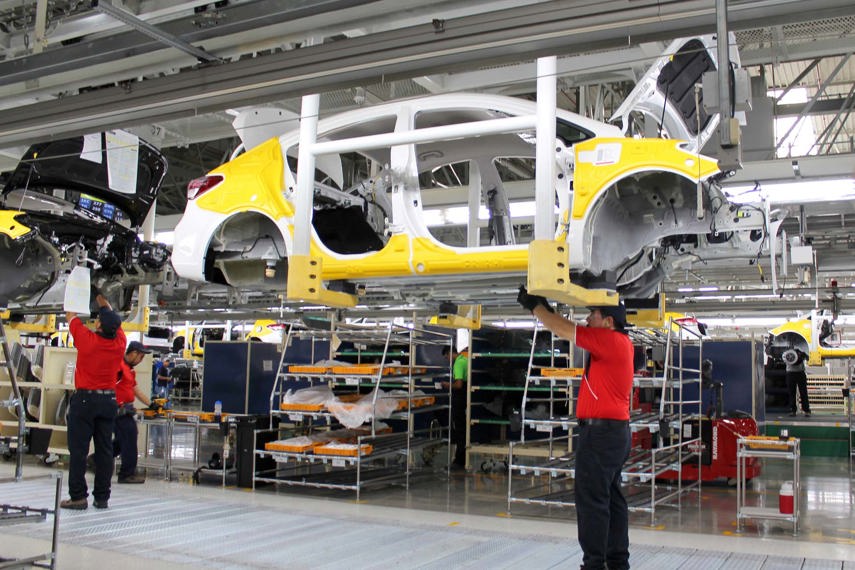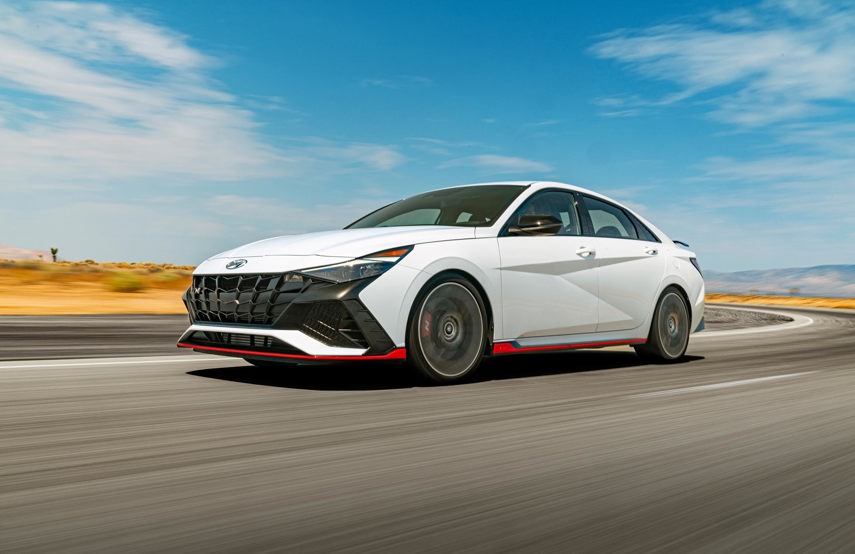For Hyundai, technology comes first and the vehicles second.
That’s according to José Muñoz, the president and global chief operating officer of the overarching Hyundai Motor Co. that’s come on like gangbusters in recent years to comfortably establish itself as one of the top players in the auto industry. That’s true not just of the automaker’s sales but its product offerings, too, with award-winning entries from both the Hyundai and Genesis marquees – both of which Muñoz happens to oversee in North America.
One area Hyundai is certainly showing strong technological leadership amongst legacy automakers – or at least a willingness to transform in a hurry – is electrification, with a steady stream of zero-emissions models over the past few years in particular. It’s probably more than a coincidence that those same models are the ones piling up the awards, but Muñoz said the electric vehicle (EV) space isn’t some sort of Field of Dreams-like utopia; just because the brands he’s in charge of are building award-winning EVs doesn’t mean the customers will come without encouragement.
“You need to bring innovative products (and) good features at a competitive price,” he said of what it takes to get people excited about EVs. “Second, you need to get customers to drive (them). We’ve seen (that) once the customers drive the cars, they buy them.”

Speaking during a small media roundtable during the New York International Auto Show (NYIAS), Muñoz said that try-before-you-buy approach is precisely why part of Hyundai’s display this year included a test track for attendees to climb inside both the Ioniq 5 and Ioniq 6. The same approach was taken earlier in 2023 at the Toronto auto show, where the Ioniq 5 and Kona Electric – as well as their corporate cousins, the Kia EV6 and Niro EV – were available for test drives.
And it’s no wonder Hyundai and others are putting such an emphasis on electrification these days. With the undeniable effects of climate change leading to global emissions-reduction strategies, the auto industry is relatively low-hanging fruit. That’s why governments around the world and across North America, including here in Canada, have implemented so-called zero-emissions vehicle (ZEV) mandates that call for the sales of new gas-powered passenger vehicles to be progressively phased out in the coming years.
In the United States, that means 50 per cent of new vehicles sold by 2030 will be emissions-free, slightly less than the 60 per cent target set by the Canadian government, while both countries are aiming for entirely ZEV sales by 2035.
Even so, the path forward isn’t one without obstacles. According to Muñoz, the biggest barrier to EV adoption in the U.S. is the Inflation Reduction Act (IRA) that revised the rules for tax rebates, with eligible vehicles now required to be assembled in North America in order to qualify. Like the existing federal, provincial, and territorial incentives offered in Canada, the old rules didn’t stipulate where the vehicles had to be built.

“That’s the biggest disappointment, because it prevents (us) from competing head-to-head,” he said of the ground Hyundai has lost next to other automakers like Tesla, Ford, and General Motors (GM) that build EVs in the U.S. He referenced the Ioniq 5 in particular as proof, with a three-point drop in segment share immediately after the U.S. government announced the revised rules.
Adding salt to the wound, according to the Hyundai head, is his company’s announcement in May 2022 that it plans to invest US$5.5 billion in EV and battery assembly plants in the U.S. But with the first of those facilities – a battery production plant in Georgia – not expected to be operational until mid-2025, it’s going to be more than two years until Hyundai’s EVs qualify for the same $7,500 federal rebate as its rivals – assuming it's still available by then.
“This is my biggest headache,” Muñoz said. “We’ve been working with the (U.S.) government to see if they could give us a waiver, because we made the announcement before the (IRA) was published.”
Similar trouble arose in Ontario a few short years ago, with an immediate dip in EV sales after the provincial government announced an end to what were at the time the most generous rebates in Canada. According to reports, EV sales in Ontario were down more than 50 per cent year-over-year following the cancellation of the incentive program in 2018.
This, of course, brings affordability into focus. Unsurprisingly, Muñoz said it’s crucial that EVs be priced similarly to compact cars like Hyundai’s own Elantra if markets like Canada and the U.S. are going to meet their ambitious sales targets.

“In order to achieve the (sales mandate) goals, electric vehicles need to be very affordable,” he said.
This comes down to economies of scale, according to Muñoz, with the cost of critical minerals and other battery components – “hopefully” – dropping as sales increase. In theory, those savings would then be passed along to the consumer, with lower asking prices for EVs overall. And while the process may not be playing out quickly, he thinks it’s happening in real-time.
“I think it’s happening,” Muñoz said. “The sales are growing, there is more production, now the suppliers that weren’t in this market see EVs as a promising future, and they’re investing so there’s more capacity, more supply on components, more competition.”
That’s another area that Muñoz said he sees as the way forward: localization. If the pandemic taught the auto industry at large anything it’s that regional rather than international supply chain solutions are required to keep production on pace with demand – especially in the face of macro forces like pandemics and disasters.
“Localization is the solution,” he said. “I think the supply chains have been overly optimized on the basis of saving a dime, (but) the situation has proven that you expose the entire business because of a small component.”

That’s part of Hyundai’s investment strategy south of the border, with the US$5.5 billion announced last May – along with another US$5 billion announced earlier – aimed at bringing battery supply closer to its plants in Georgia, which will ultimately produce some 500,000 EVs in the coming years. And just as history has shown, the residual effects will all but assure the company’s suppliers will follow suit with nearby plants of their own.
More evidence of this localized electrification is being seen in Canada, with automaker Stellantis – the parent company to brands like Chrysler, Dodge, and Ram Trucks – announcing last year a joint venture with LG Energy Solutions to build an EV battery production plant in Windsor, Ont., while Volkswagen’s PowerCo recently announced it will do the same in St. Thomas, Ont.
So what can apprehensive shoppers expect from EVs? It extends beyond eliminating emissions, according to Muñoz, with plenty of enjoyment, too. Ultimately, though, it all comes back to technology.
“You have more space, a lower centre of gravity,” he said. “(It) allows you to have better acceleration, better dynamics, and more powerful cars … the technology is better.”


